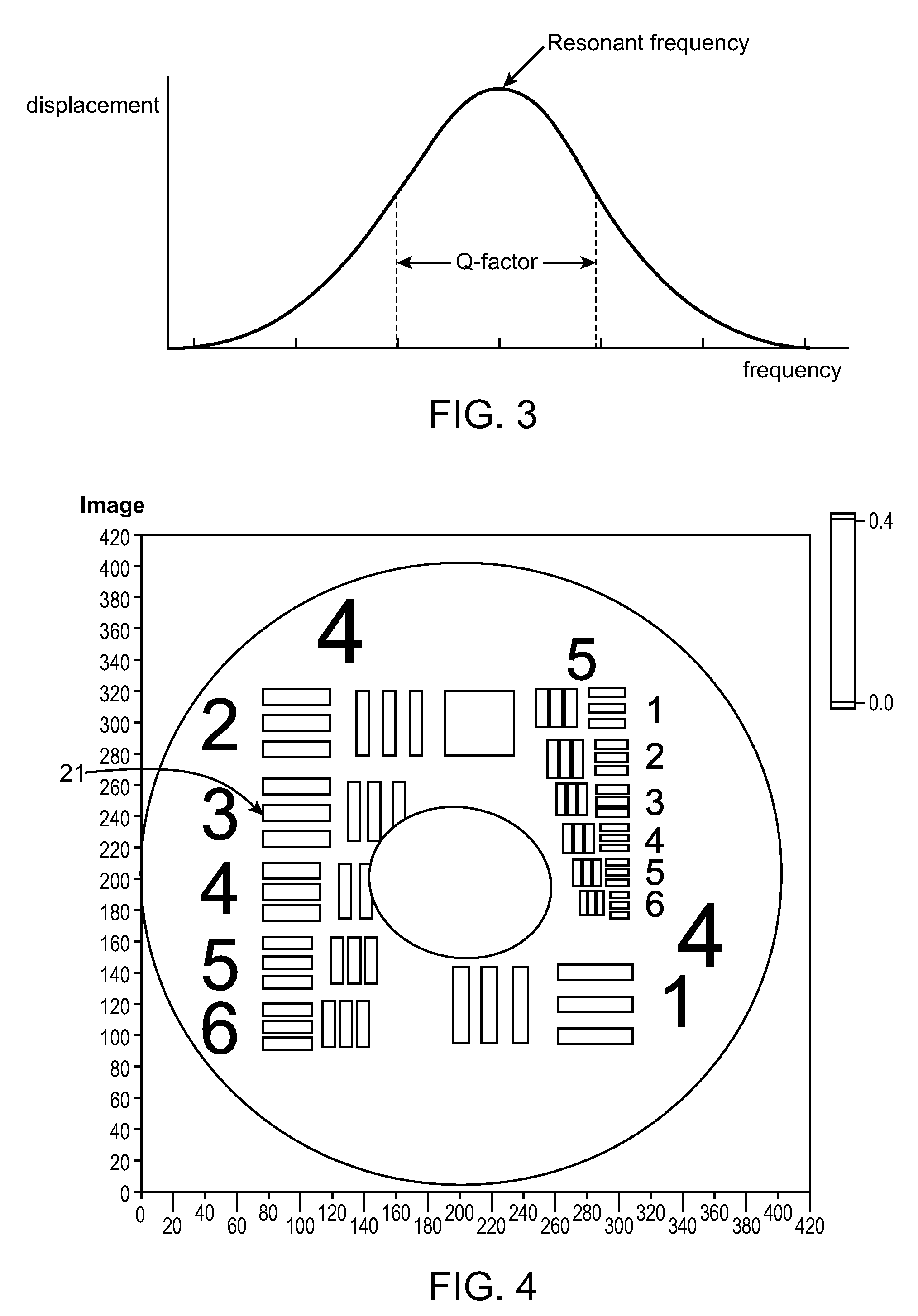Methods of driving a scanning beam device to achieve high frame rates
a scanning beam and frame rate technology, applied in the field of methods and scanning beam systems, can solve the problems of large energy storage of scanning elements, affecting the actual scan pattern of illumination spots, and affecting the accuracy of scanning methods, etc., to achieve the effect of improving the frame rate of resonant scanning beam devices, reducing the amount of stored energy, and preventing the scanning of scanning elements in a short amount of tim
- Summary
- Abstract
- Description
- Claims
- Application Information
AI Technical Summary
Benefits of technology
Problems solved by technology
Method used
Image
Examples
Embodiment Construction
[0035]The present invention provides methods and systems for improving a frame update rate of a scanning beam device by rapidly removing stored energy in a scanning element and returning the scanning element to its starting position.
[0036]The scanning beam systems of the present invention include a scanning beam device and a base station for controlling the image formation or image acquisition of the scanning beam device. The scanning beam devices of the present invention may take on a variety of forms, but are typically in the form of an endoscope, catheter, fiberscope, microscope, boroscope, bar code reader, an image display, or other devices for generating images or acquiring images of a target area. The scanning beam devices of the present invention may be a limited use device (e.g., disposable device) or a multiple-use device. If the device is for medical use, the scanning beam devices will generally be sterile, either being sterilizable or being provided in hermetically sealed...
PUM
 Login to View More
Login to View More Abstract
Description
Claims
Application Information
 Login to View More
Login to View More - R&D
- Intellectual Property
- Life Sciences
- Materials
- Tech Scout
- Unparalleled Data Quality
- Higher Quality Content
- 60% Fewer Hallucinations
Browse by: Latest US Patents, China's latest patents, Technical Efficacy Thesaurus, Application Domain, Technology Topic, Popular Technical Reports.
© 2025 PatSnap. All rights reserved.Legal|Privacy policy|Modern Slavery Act Transparency Statement|Sitemap|About US| Contact US: help@patsnap.com



